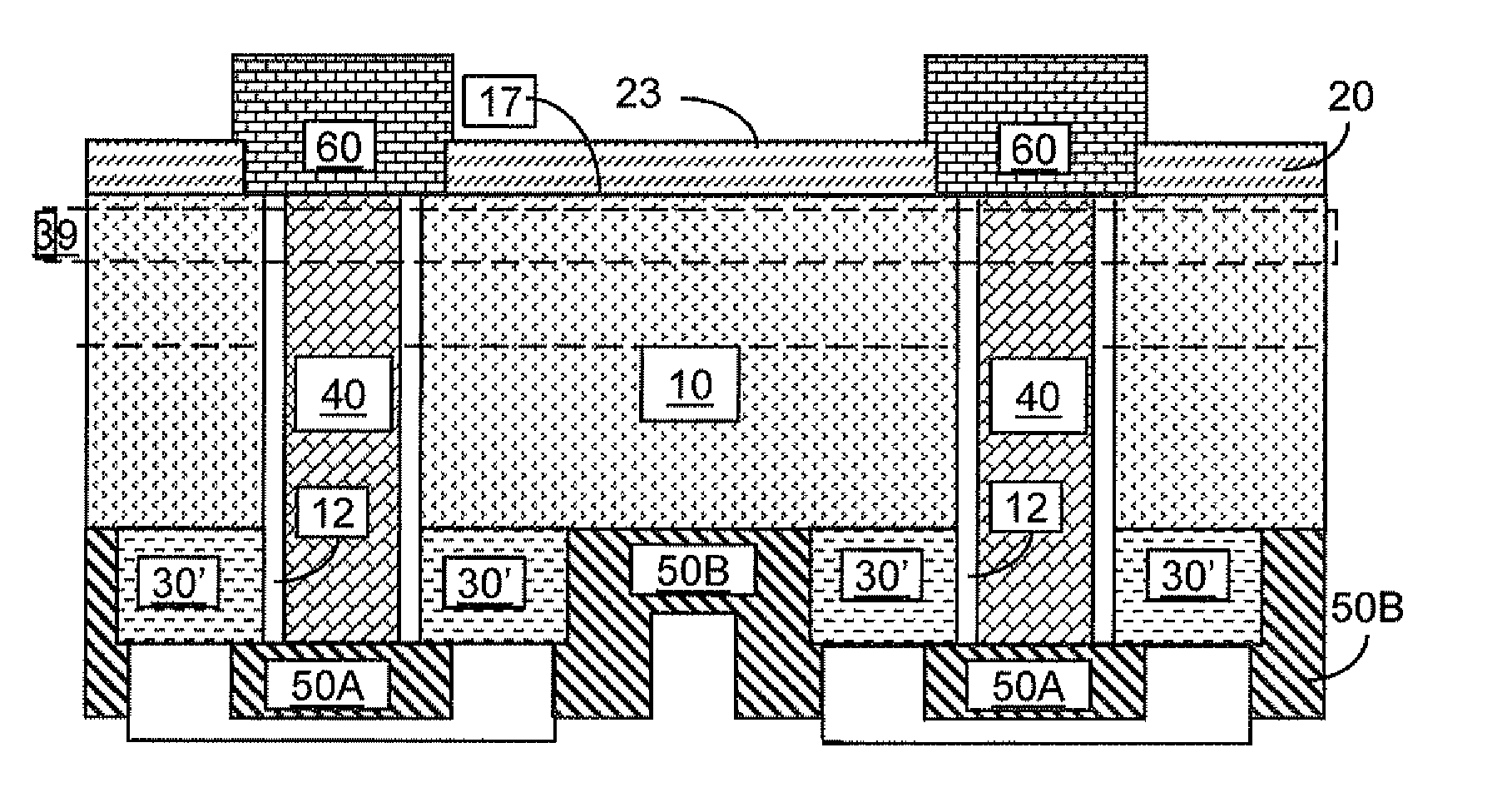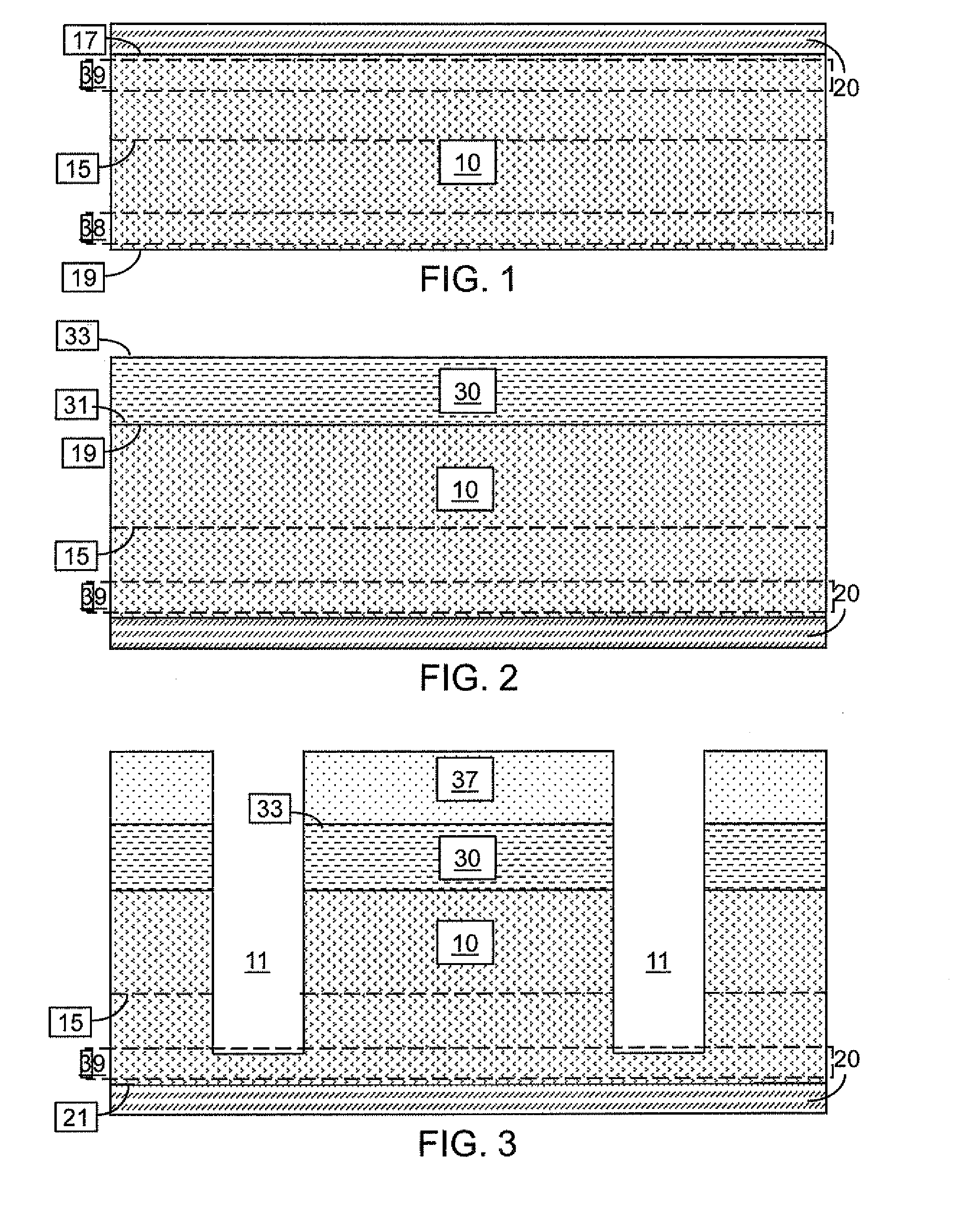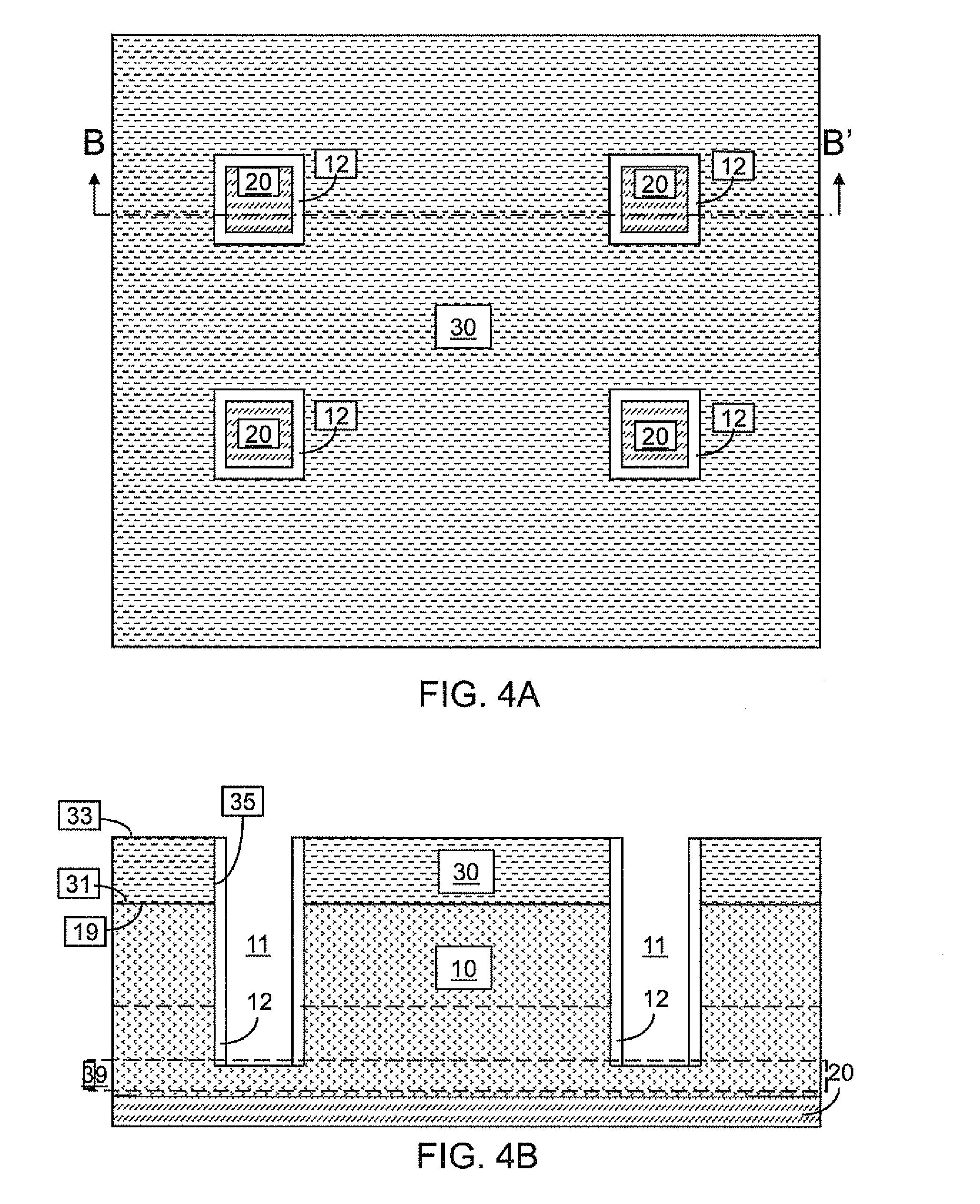Grid-line-free contact for a photovoltaic cell
a photovoltaic cell and contact technology, applied in the field of grid-line-free contact for photovoltaic cells, can solve the problems of reducing and achieve the effect of increasing the effective area of the photovoltaic cell
- Summary
- Abstract
- Description
- Claims
- Application Information
AI Technical Summary
Benefits of technology
Problems solved by technology
Method used
Image
Examples
first embodiment
[0021]Referring to FIG. 1, a first exemplary photovoltaic cell structure according to the present invention includes a substrate 10 and an anti-reflective layer 20 located on the front surface 17 of the substrate 10. The substrate 10 includes a photovoltaic material that generates a non-zero electric potential between the front surface 17 and the back surface 19 of the substrate 10 upon irradiation by electromagnetic radiation. The electromagnetic radiation can be in the visible spectrum, ultraviolet range, and / or infrared range.
[0022]The photovoltaic material can be a crystalline material or an amorphous material. The crystalline material can be single crystalline silicon, polycrystalline silicon, germanium, gallium indium, and / or gallium arsenide (GaAs). The amorphous and multicrystalline material can be amorphous silicon, cadmium telluride (CdTe), and / or copper indium diselenide (CuInSe2, or CIS). The photovoltaic material can be in the form of a block, or can be in the form of a...
second embodiment
[0048]Referring to FIGS. 10A and 10B, a second exemplary photovoltaic cell structure according to the present invention is derived from the first exemplary photovoltaic cell structure of FIG. 3 by employing a conductive material for the anti-reflective layer 20 and extending the anisotropic etch during the formation of the at least one through-substrate trench 11.
[0049]The anisotropic etch employed to form the at least one through-substrate trench 11 is extended to etch through all of the surface region 39 in the substrate 10. The anisotropic etch can employ an endpoint scheme to stop at the proximal surface 21 of the anti-reflective layer 20. Alternately or additionally, the etch chemistry for the anisotropic etch can be selected to be selective to the material of the anti-reflective layer 20, i.e., to etch only the photosensitive material of the substrate 10 and not to etch the material of the anti-reflective layer 20. In a variation of the second embodiment, the anti-reflective l...
third embodiment
[0053]Referring to FIGS. 13A and 13B, a third exemplary photovoltaic cell structure according to the present invention can be derived from the first exemplary photovoltaic cell structure of FIGS. 9A and 9B or from the second exemplary photovoltaic cell structure of FIGS. 12A and 12B by recessing at least one portion of the substrate 10 from the front side. Specifically, a fourth photoresist 67 can be applied on a distal surface 23 of the anti-reflective layer 20 and lithographically patterned to form at least one opening therein. Preferably, the at least one opening in the fourth photoresist 67 is aligned to the at least one conductive through-substrate via 40 located within the substrate 10. The pattern in the at least one opening in the fourth photoresist 67 is transferred through the anti-reflective layer 20 and into the surface region 39 of the substrate 10 by an etch. The etch may be an anisotropic etch that employs the fourth photoresist 67 as the etch mask.
[0054]The etch form...
PUM
 Login to View More
Login to View More Abstract
Description
Claims
Application Information
 Login to View More
Login to View More - R&D
- Intellectual Property
- Life Sciences
- Materials
- Tech Scout
- Unparalleled Data Quality
- Higher Quality Content
- 60% Fewer Hallucinations
Browse by: Latest US Patents, China's latest patents, Technical Efficacy Thesaurus, Application Domain, Technology Topic, Popular Technical Reports.
© 2025 PatSnap. All rights reserved.Legal|Privacy policy|Modern Slavery Act Transparency Statement|Sitemap|About US| Contact US: help@patsnap.com



